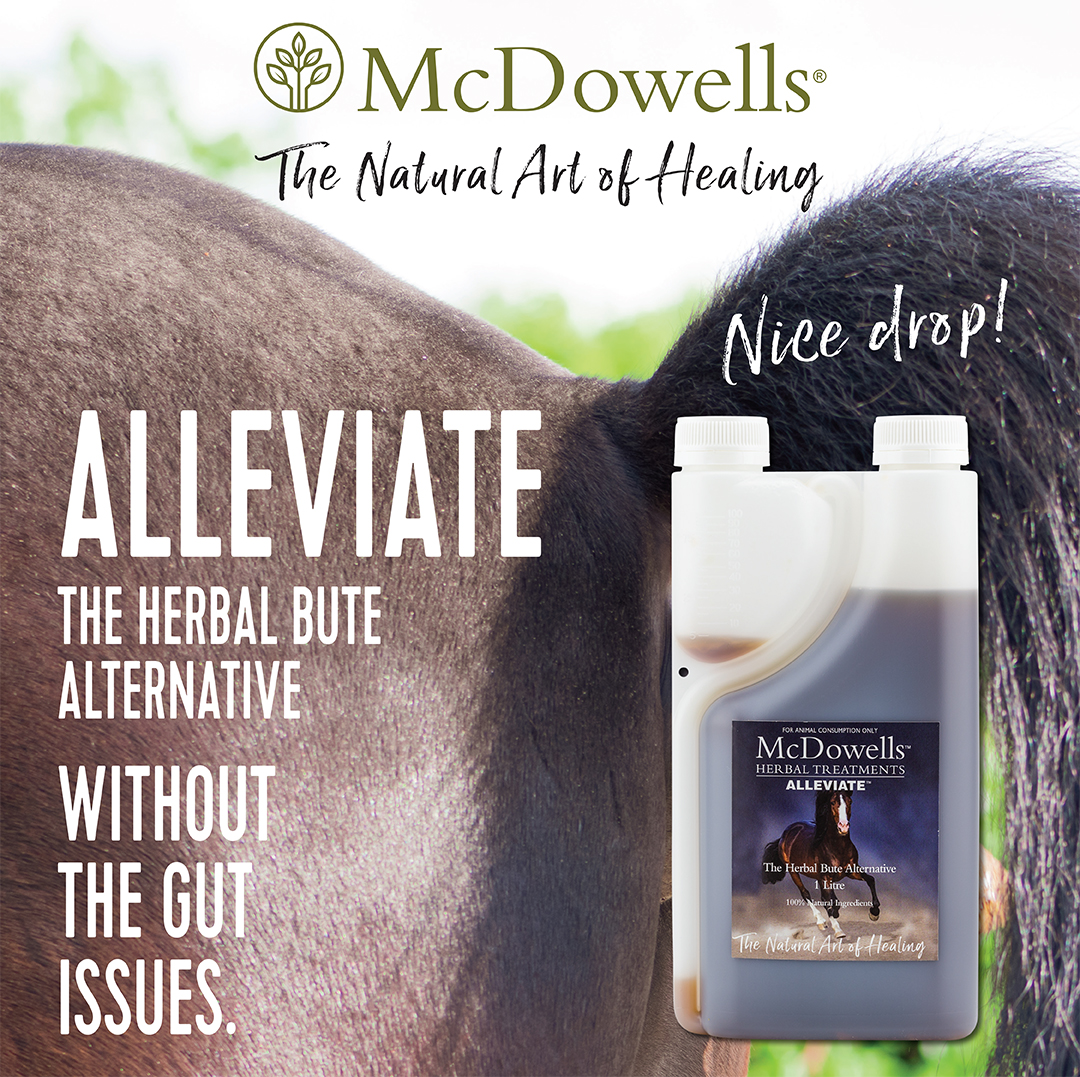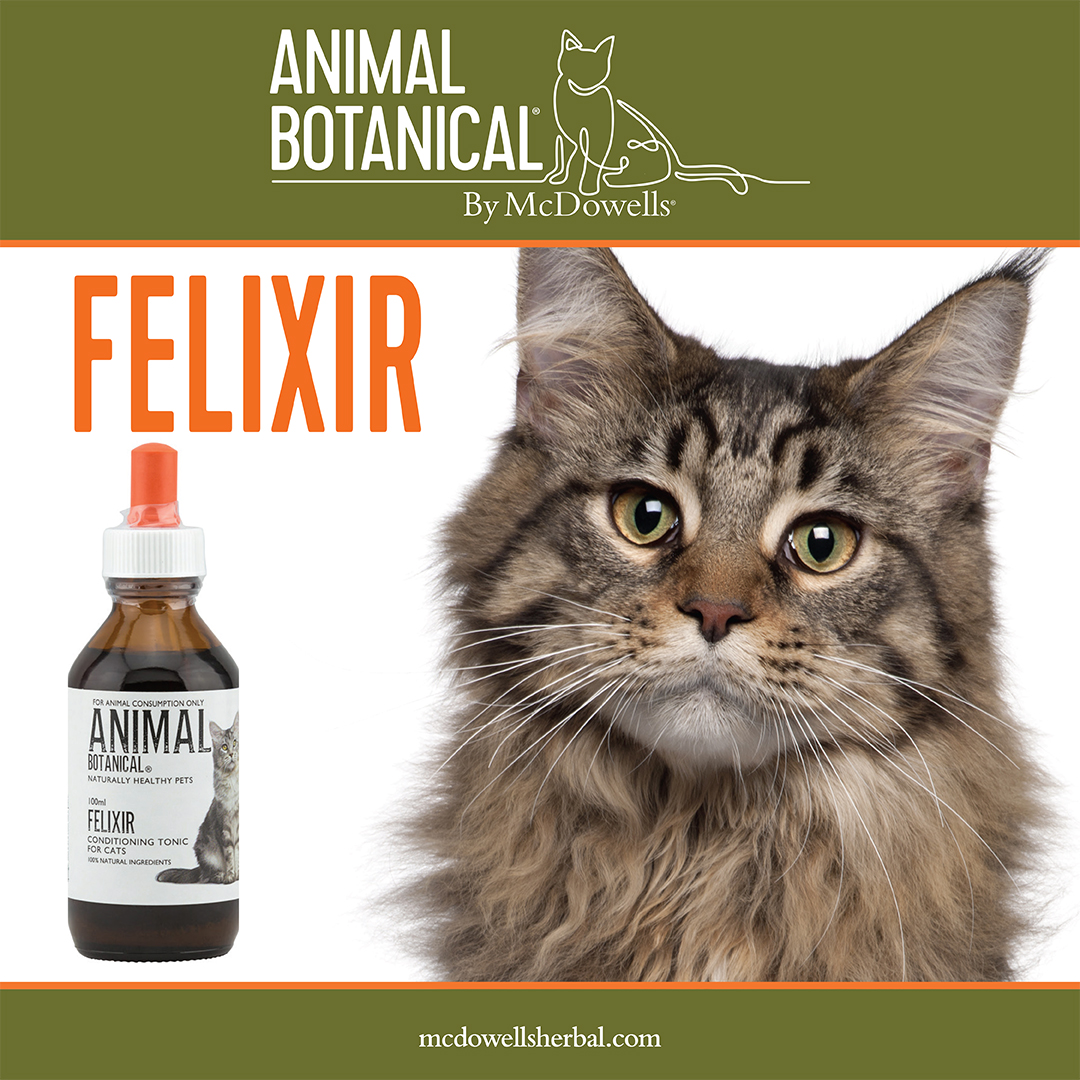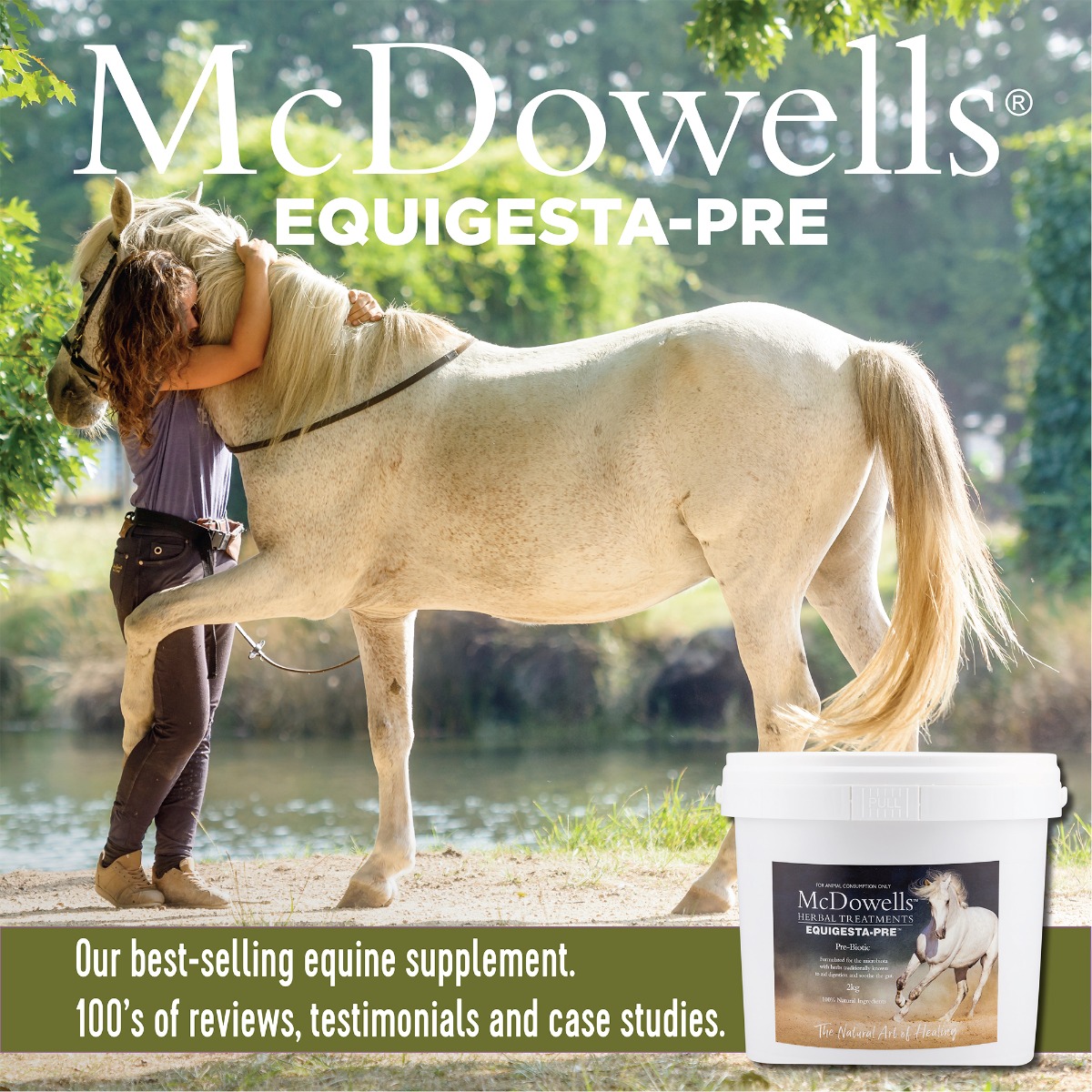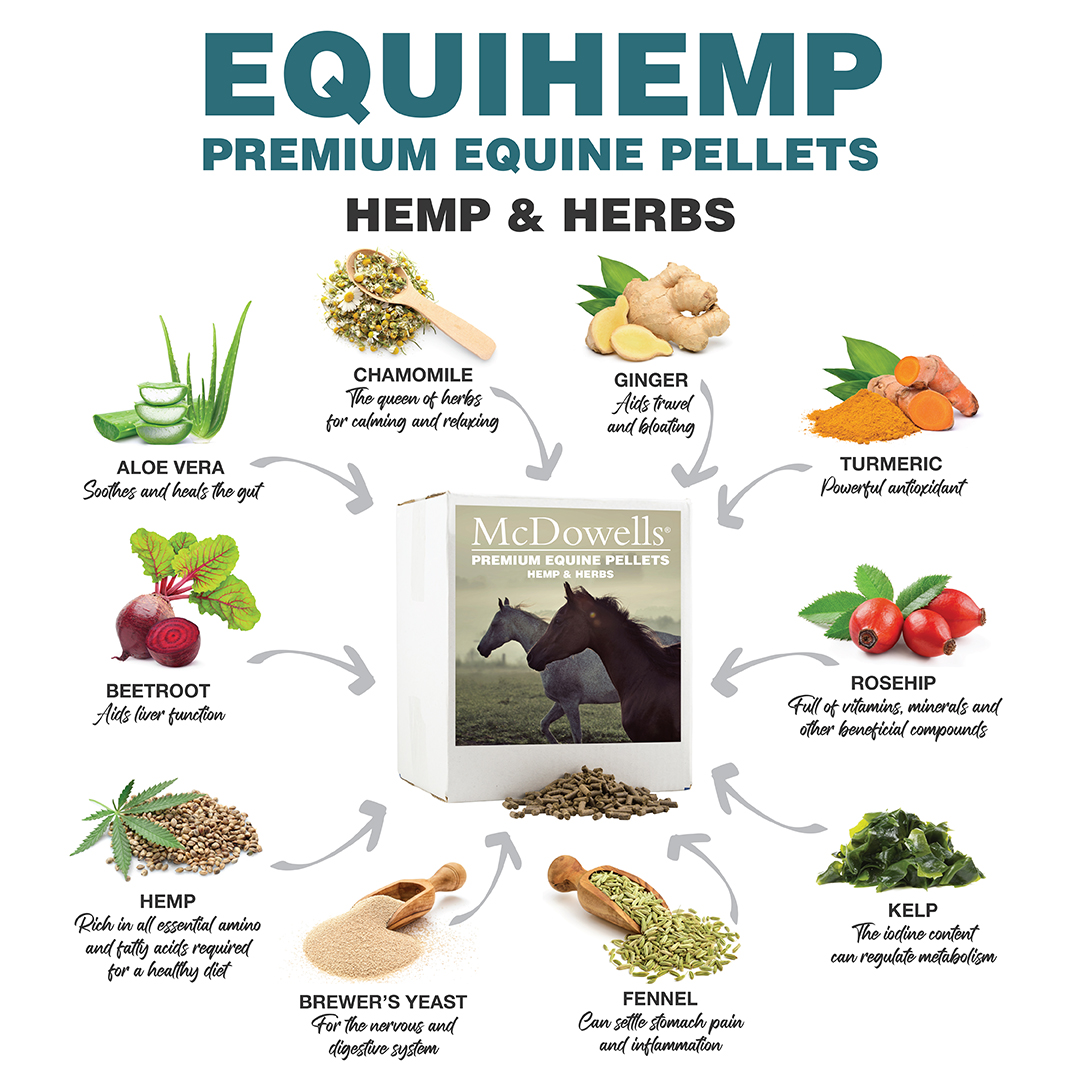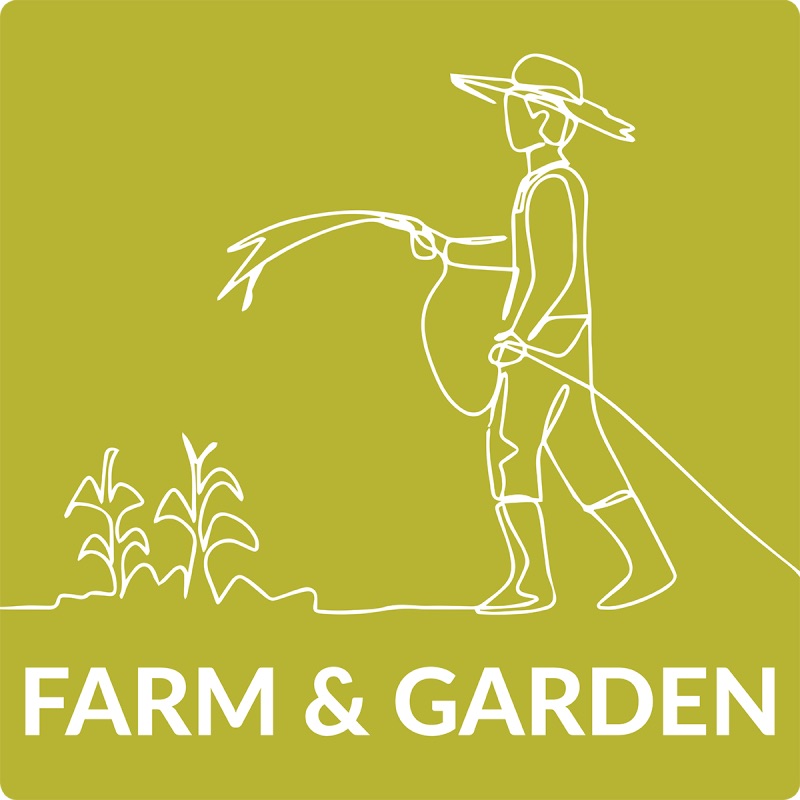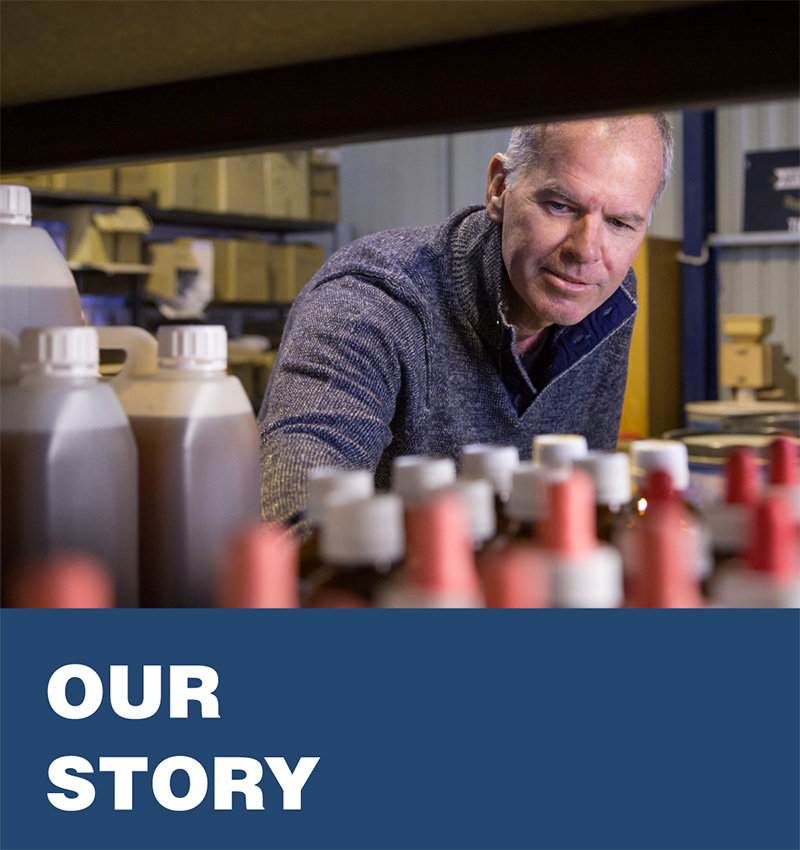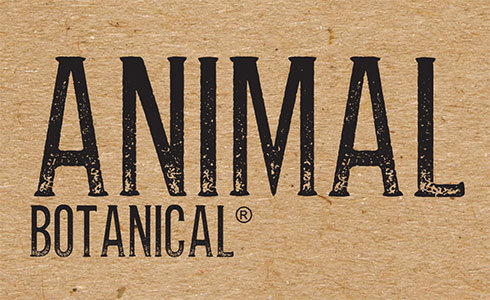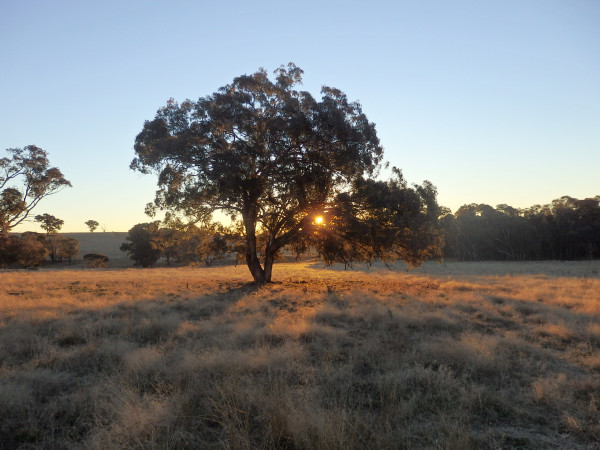Of all the topics I write about nothing can be more important than looking at the environment that you keep your horse.
Having grown up in rural NSW I am lucky enough to have been able to have had a relatively chemical free upbringing - not unlike my grandparents, on who's property we lived. More modern agricultural practices now use so many chemicals that if you really sat down and looked at it logically I think that most people would be horrified!
As we progress with technology we are discovering day-by-day the impacts of chemicals and plastics and the devastating consequences this can have on diversity of animal and plant species. Studies are now being published regularly looking at the impacts of these pollutants on our health. We can safely assume that our animals are also going to be impacted in the way that we are.
Desertification is a huge threat - particularly in Australia. The world is losing environments to deserts at a rate never seen before. At my last reading 70% of land mass is now desert and it is growing. This impacts global weather patterns and loss of habitat for many wild species.
So let’s start looking at some basic solutions to managing your horses and small farm holdings so that we can all contribute to helping the land maintain its health.
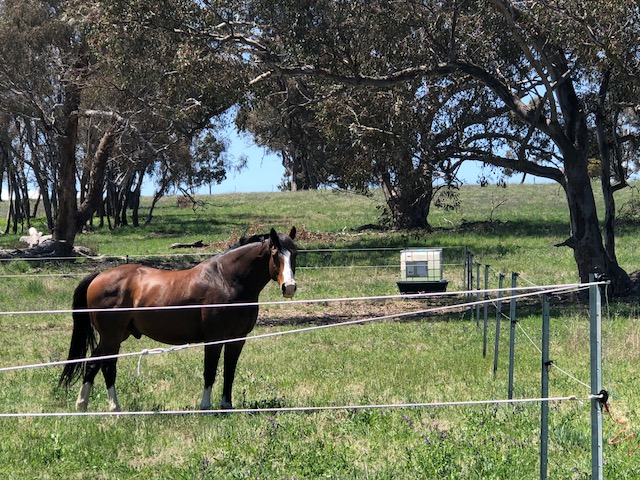
I apologise in advance to those people who are forced to keep their horses in stables and small environments. This article is not aimed at you - however I hope that what I have written inspires you to look at places where you can keep your horse in more natural environment!
The Importance of Soil Health and keeping our insect populations healthy
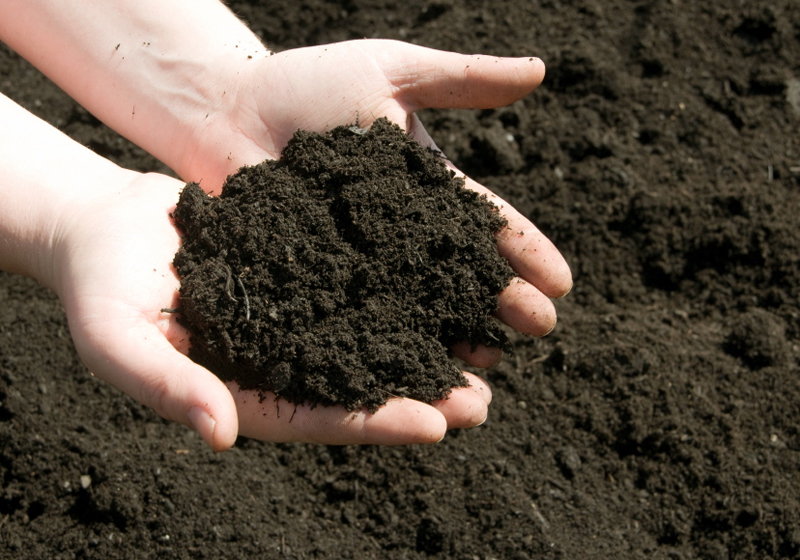
We already know that microbes play such an important role in the health of our horses’ gut - what we may not be aware of is the importance of helping the soil maintain its equilibrium and microbial population! Good soil retains moisture and aids in carbon fixing, as well as helps create microclimates that are important for atmospheric changes that bring in rain.
If we are to consider the interconnectedness of all life we need to see soil as more than a base rock finely ground with some organic material in it. Soil is a place where a multitude microbes, fungi and other insects live in a dynamic world- creating the soil and the essential nutrients as part of this dynamic process.
How do we ensure that our soil is healthy?
First step is to asses you soil type and Ph and then work out how to best support it.
Use a home Ph kit to work out the acid/alkaline state of various parts of your acreage and if you are unsure as to the soil type you can get your local agronomist to do a full soil and pasture assessment.
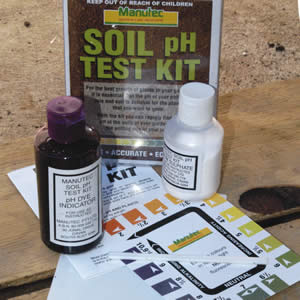
In Australia we have great variations in soil type and Ph, and this can often occur in the same area. You can get gorgeous red basalt soils of neutral Ph verge into loamy soil and then taper off into straight acidic granite soils and alluvial base rock all in 50 acres!
It is possible to improve all soils over time, and as an example I will focus on my own property which has loamy granite soils consistently over its 200 acres. We have two red basalt caps on two of my main horse paddocks and it is these paddocks which I am now rehabilitating due to the drought.
Winterwood farm
We purchased Winterwood farm in July of 2018 which was in the middle of the worst drought NSW has seen in 100 years. Not having yet spent 12 months going through the seasons it’s hard to assess what we need to do in one straight forward plan, so every week, month and season is a slow and exciting reveal as we notice species of birds, plants and other native and introduced animals as they appear.
The Ph here is a variety of neutral to slightly acidic. You can see areas where there is a lovely depth of soil and moisture, and other areas which indicate granite loam and more acid soils. Sheep’s sorrel is one plant which shows us that the soil is acidic and will need support from basalt dust and dolomite.
After the long dry spell we had an over abundance of Paterson Curse appear, as well as black thistle, saffron thistle and the dreaded Cat’s Head. Underneath all this was sub clover, rye grass, phalaris, native grasses and various other varieties of grasses and broadleaf plants. Bees are buzzing around like crazy getting all the pollen from the “Curse” which make the BEST honey.
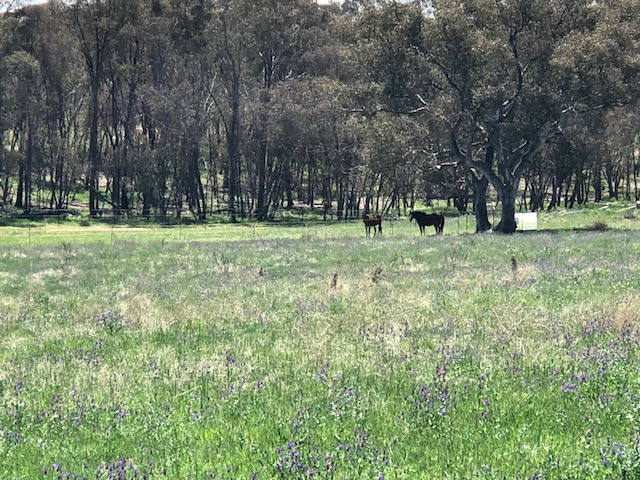
The standard approach would be to spray the whole paddock with Round Up and then rehabilitate the pasture- but I don’t want to do this. The Patterson’s curse is good for the soil ( it has a tap root which breaks up compacted soils) and the bees are loving the flowers!
I want to use a sequence farming/holistic approach
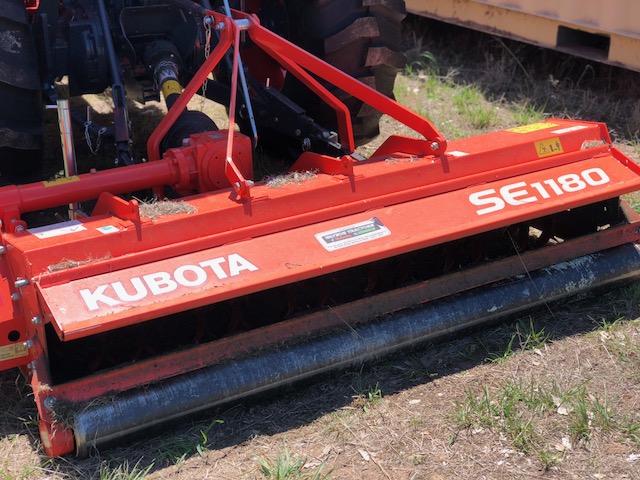
I decided to mow the grass to knock the Patterson’s curse in the horse paddock and to help dry out the rich clover which was bringing my horses perilously close to laminitis. Horses by the way, do not graze on Paterson’s curse unless there is no other feed available. Some horses can develop a taste for it if they have no other feed, but generally they won’t eat it.
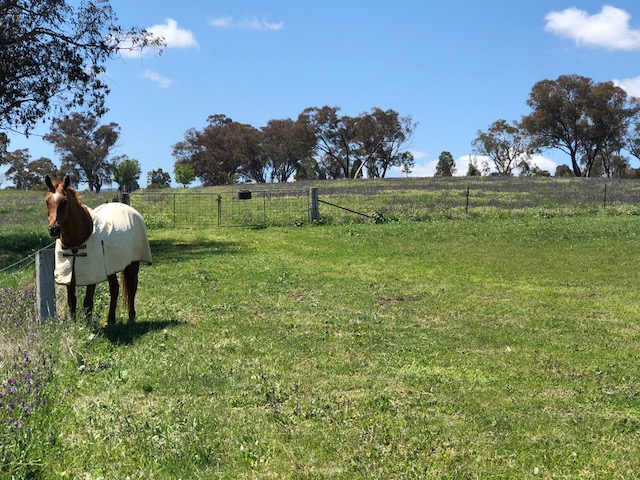
You can see the results in the images of before and after, and the horses looking extremely well and shiny!
The benefits of mowing for weed control
- Reducing canopy cover to enable competing grasses to dominate
- Cuts the flowers to halve the seed bank
- Stresses the curse to die back
- Mulch mowing composts the soil so will help to maintain moisture in the soil
- Breaks up manure so helps to dry out eggs that require moisture to stay viable.
- Helps biological controls like the Taproot Flea Beetle that targets Patterson’s curse in the spring.
There is plenty of feed still, the horses are no longer at risk of laminitis as the pasture has dried out VERY quickly (it’s been a bit dry) and the weeds have certainly been knocked around.


